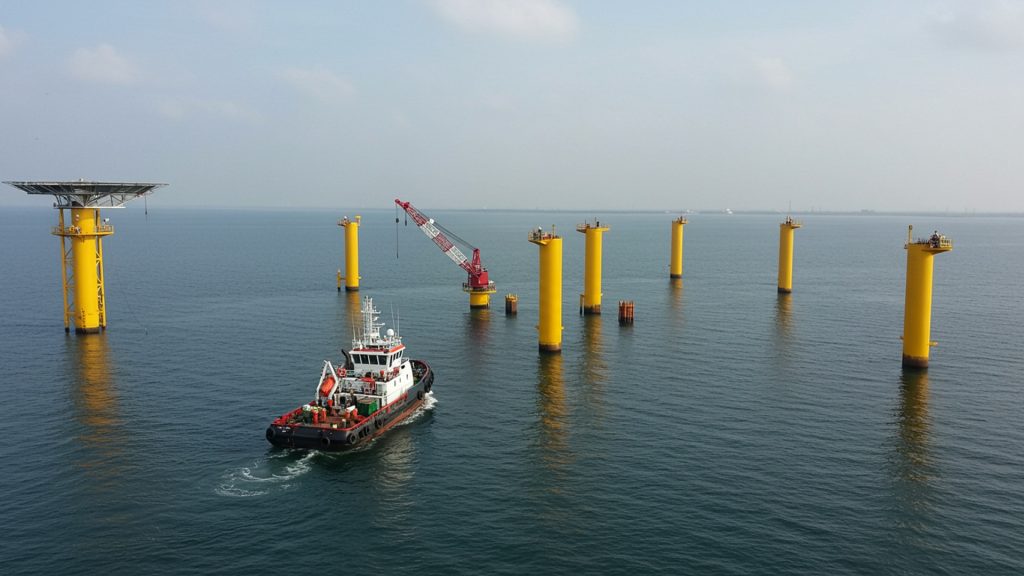India abruptly cancels crucial offshore wind power projects planned off the coasts of Gujarat and Tamil Nadu, casting doubt on the nation’s ambitious renewable energy targets. This sudden move scraps tenders for significant capacity, directly impacting future green energy development in these key maritime regions. The decision, coming at a critical time for global climate commitments, immediately raises questions about India’s commitment to expanding its clean energy portfolio and signals a major shift in its offshore wind strategy. The tenders, vital for harnessing the vast wind potential in the Arabian Sea and Bay of Bengal, were seen as a cornerstone of India’s push towards a sustainable energy future.
Major Offshore Wind Energy Tenders Called Off
The Solar Energy Corporation of India (SECI) has cancelled two vital tenders for offshore wind energy projects, totaling 4,500 megawatts (MW) of planned capacity. This decision affects a 500 MW project off the coast of Gujarat and the allocation of seabed rights for 4,000 MW off the coast of Tamil Nadu. The main reason given for these cancellations is a clear lack of interest from companies that develop such projects. The 500 MW project was meant for the Gulf of Khambhat, near Gujarat. Its tender was first put out in September 2024. The larger 4,000 MW tender was for seabed areas in the Gulf of Mannar, specifically identified areas 2, 3, 4. 7, near Tamil Nadu. This tender was opened in February 2024. For both projects, companies were supposed to submit their final bids in late July or early August 2024. But, the tenders failed to get enough support from developers, leading to their cancellation.
Why Companies Did Not Show Interest
Industry experts point to several reasons why these large offshore wind projects did not attract enough companies. One major factor is the high cost involved in building and setting up offshore wind farms. Unlike wind farms on land, offshore projects need stronger structures and foundations because they are in the sea. They also require special equipment and facilities that are not easily found in India. Benjamin Swarbrick, an analyst focused on this region for TGS 4C Offshore, noted that India has struggled to get real interest from developers, even for the Gujarat project that included special funding. He believes India needs new rules and major upgrades to its infrastructure to make the market appealing to developers. Kunal Chandra, from RWE AG, called the cancellations a “huge missed opportunity” and an “inevitable outcome of unfinished economic reforms.”
India’s Offshore Wind Goals
India has a long coastline, stretching about 7,600 kilometers, which is seen as a good place for offshore wind power. The government has had an official policy for offshore wind energy since October 2015. The Ministry of New and Renewable Energy had set a goal to install 30 GW of offshore wind capacity by the year 2030. In June 2024, the Indian government approved its first offshore wind energy projects. These included 1 GW of capacity, split evenly between Gujarat and Tamil Nadu. The government also approved a total cost of 7,453 crore rupees for these projects. A significant part of this amount, 6,853 crore rupees, was set aside as Viability Gap Funding (VGF) to help cover the high costs for developers. The idea was that successful projects would produce about 3. 72 billion units of clean electricity each year, helping to reduce carbon dioxide emissions.
Challenges Faced by Renewable Energy Projects
The cancellation of these offshore wind tenders is part of a larger trend of challenges in India’s renewable energy market. Between 2020 and 2024, tenders for about 38. 3 GW of utility-scale renewable energy projects were cancelled. This shows that around 19% of all tenders put out during that time were called off. One of the problems is that tenders are often undersubscribed, meaning not enough companies bid for the projects. In 2024, about 8. 5 GW of tenders faced this problem, which was five times more than in 2023. Companies also face delays in signing power purchase agreements (PPAs), which are long-term contracts to buy electricity. The Solar Energy Corporation of India (SECI) alone has a backlog of about 12 GW of projects waiting for these agreements. Experts suggest that the need to meet annual bidding targets sometimes pushes agencies to issue tenders without fully planning for who will buy the power, leading to delays. Raj Prabhu, a leader at Mercom Capital Group, believes that offshore wind is currently “too expensive” for India and is more of a “press release type of technology” rather than something that will be practical very soon. He noted that specialized port infrastructure and domestic supply chains are key missing pieces. But, SECI has hinted that new, possibly revised, tenders might be put out in the future, suggesting that the goal of offshore wind energy is not completely off the table.

